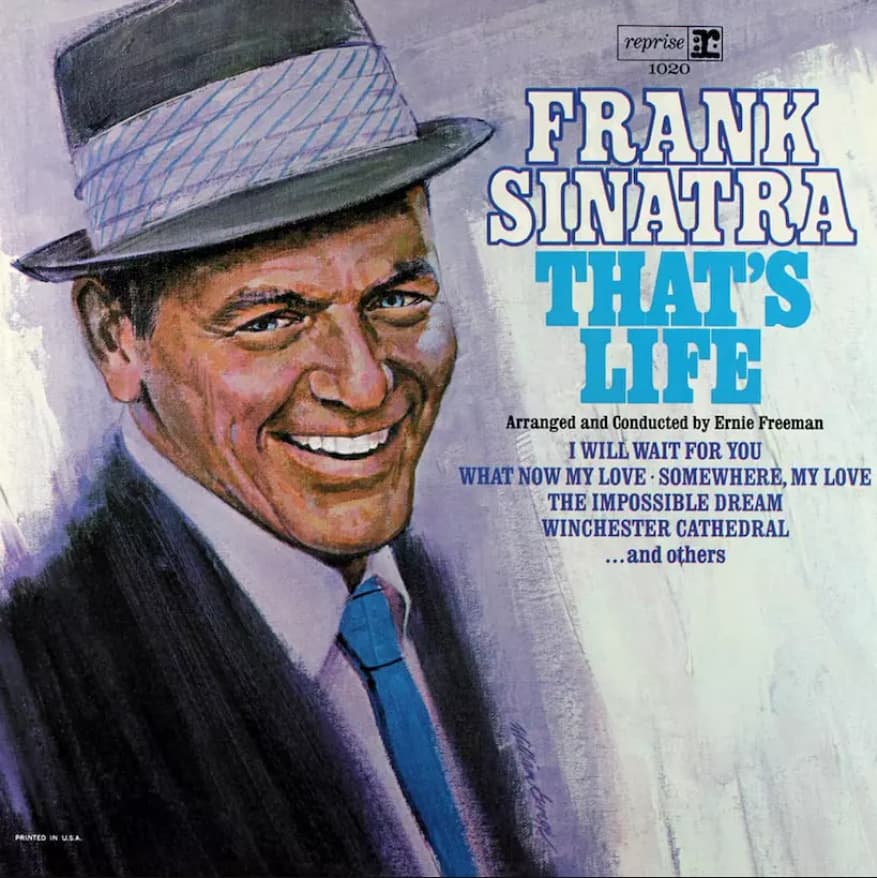
The Ultimate Ode to Resilience and the Ups and Downs of Life’s Unpredictable Journey
In the winter of 1966, a song began to resonate with a powerful, almost defiant spirit, climbing the charts with the swagger of a man who had seen it all. It was none other than the legendary Frank Sinatra and his monumental hit, “That’s Life”. Reaching number four on the Billboard Hot 100, the track was more than just a catchy tune; it was an anthem for a generation, a stark and honest reflection on the relentless, sometimes brutal, cycle of life. On the adult contemporary charts, it soared even higher, hitting the number one spot and cementing its place as a classic. The song was the title track of his 1966 album of the same name, That’s Life, a record that showcased Sinatra’s enduring power and his masterful ability to connect with listeners on a deeply personal level.
The story behind the song’s creation is a fascinating one, a tale of a relatively unknown writer and a seasoned performer recognizing a timeless truth. Written by Dean Kay and Kelly Gordon, “That’s Life” was first recorded by singer Marion Montgomery. However, it was Sinatra’s version that truly captured the song’s essence. When the song was pitched to him, Sinatra, ever the shrewd interpreter, immediately understood its potential. He saw in its lyrics a mirror of his own life: the dizzying highs, the crushing lows, the endless fight to get back up after being knocked down. It’s a sentiment he knew intimately, having experienced both the pinnacle of fame and the despair of career setbacks. For Sinatra, it wasn’t just a song; it was his story, and he delivered it with a conviction that only he could muster. He took the song and made it his own, turning a simple composition into a powerful declaration of self-determination.
The meaning of “That’s Life” is as straightforward as it is profound. It’s an unvarnished look at the human condition. The lyrics tell a story familiar to all: the feeling of being on top of the world one moment, only to find yourself struggling the next. “I’ve been a puppet, a pauper, a pirate, a poet, a pawn and a king” – these opening lines aren’t just clever alliteration; they’re a poetic summary of the diverse roles we play and the many fortunes we experience throughout our lives. The song is a beautiful paradox, simultaneously melancholic and optimistic. It acknowledges the pain and disappointment inherent in life (“I know that I’m just a fool who’s willing to sit and play the part”), but it never surrenders to despair. Instead, it embraces the struggle, finding strength in the sheer act of enduring.
As the iconic brass section blares and Sinatra’s voice, a little rougher with age but still imbued with a magnetic charisma, belts out the chorus, we are reminded that life is a series of punches. But the real lesson is not to avoid the punches; it’s to get back up after each one. The song’s message is one of resilience, of a refusal to be beaten down by circumstance. “I pick myself up and get back in the race” is not just a line; it’s a philosophy. It’s a testament to the indomitable spirit of a man who lived his life in the public eye, facing both adoration and criticism with equal measure. For older listeners, the song evokes a deep sense of nostalgia, bringing to mind their own triumphs and tribulations. It’s the kind of song you put on when you’ve had a tough day, a song that reminds you that you’re not alone in your struggles and that a new day, with its promise of a fresh start, is always just around the corner. It’s a reminder that life, in all its messy, glorious, heartbreaking, and beautiful chaos, is truly worth living.